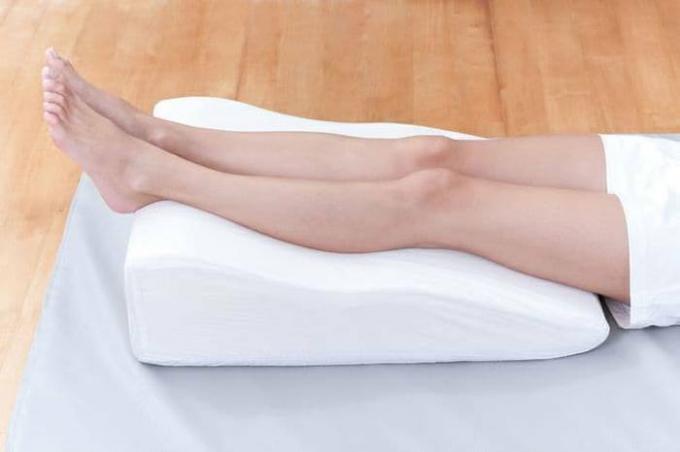Erysipelas, or erysipelas, is a seasonal disease. Its peak falls on the end of August-September, when Ukrainians begin to dig potatoes en masse. How to prevent this disease? How to treat erysipelas? Doctor advises
What are the symptoms of erysipelas
It is easy to recognize a face. It begins with a violent explosion of fever - up to 39-40 ° C. Necessarily with a strong, like malarial, chills. And soon the reason for the temperature becomes apparent - a bright red, with clear contours, an irregularly shaped painful spot on the skin. Or even a blister.
A hitch with the diagnosis happens if the redness is delayed, sometimes for a day or two. Then it is not clear why such a temperature is, and ARI is being treated. Or when it is necessary to distinguish from thrombophlebitis.
This characteristic inflammation of the skin and subcutaneous tissue is caused by streptococcus. But this is not a contagious disease, it is not transmitted.

Dust, injury and sweat in the garden are great breeding grounds for erysipelas / istockphoto.com
Where an erysipelas can appear on the body
The favorite localization of erysipelas is the legs, which is why their hygiene is of paramount importance. Why on your feet? The most distant part of the body from the heart with the slowest blood flow, often with stagnation. And that is what streptococcus needs: to slow down, quieter and quieter.
Could there be erysipelas in other places? Yes. The next most popular is the face. The disease, as a rule, is preceded by the tearing off of the pimple, the crusts - the drift of the infection. It also happens on your hands if you, while cutting meat or fish, are injured. True, then it is called erysipeloid, there is a different pathogen, but the picture is the same. It also happens on the hands of women who have undergone the removal of the mammary gland. The reason is that during the operation, the lymph nodes under the arm are cut out and, accordingly, the lymphatic ducts are injured - the outflow of lymph and blood from the hand is disrupted. And streptococcus only needs stagnation - in a swamp the infection starts up faster than in a fast river.
How is erysipelas treated?
In most primary cases, it is not difficult. Streptococcus is still sensitive to commonly used antibiotics. This creates a deceptive illusion of the simplicity of the disease - easily diagnosed, easily treated. But doctors have a saying "The faster the erysipelas is gone, the sooner it will return."
The insidiousness of this sore is in repetitions, or, medically, relapses. This is a recurrent disease. Relapses sometimes reach a dozen. As a result, the leg on which the erysipelas is repeated (and it is more often in the same place, which proves that streptococcus here it remains, not killed, in the lymphatic system and subcutaneous tissue), thickens and becomes constantly edematous.
In severe, neglected cases, it looks like an elephant's leg - that's what it is called, elephantiasis, elephantiasis.

Prevent cracked heels / istockphoto.com
What is the prevention of erysipelas
This disease is mainly female, middle-aged and older, in those who have given birth. During pregnancy, the pelvic veins are clamped by the enlarged uterus, respectively, the pressure in the veins of the legs increases, and the same stagnation is formed, which does not go away after childbirth. Varicose veins, thrombophlebitis begin, and then overweight with diabetes, hypertension... All this, together with nail fungus, are risk factors for the onset and rooting of erysipelas.
Hence, what kind of prevention? No, you have to give birth - how can you do without it. But elastic stockings on the legs, so that they are beautiful, without knots, - put on. And if you have varicose veins - treat it.
- To prevent onychomycosis (nail fungus) - for this, not just wash the legs several times a day, but also wipe dry between the fingers - mold loves when it is humid and warm.
- Watch the heels so that there are no hardened cracks.
- For men, wash and change socks daily.
- To the bathhouse, to the pool - in your flip flops, do not go barefoot. Everything begins with a fungus. Appeared - to harass until it got accustomed. All these, even microscopic, skin lesions are a wide pole road for streptococci.
- Avoid swelling. Sedentary, standing work is bad. Warm up, running in place, jumping, squatting, walking.
- Treat hypertension, atherosclerosis.
- Sleep with a raised foot end, so that it dies out overnight. There should be no swelling or traces of rubber bands.
- You work in the garden - sock, lacing, so that the earth gets inside less.
- Follow the shoes. Not only wipe the outside, but also disinfect the inside. Select by size - so that it is comfortable, and not just beautiful. Often it begins with corns, with abrasions. Combine beauty and health.

Sleep with your legs upside down to avoid stagnant lymph / istockphoto.com
Increased sugar very much disrupts blood circulation, especially in the small capillaries of the legs - that very stagnation creates. And also immunodeficiency develops in diabetes, i.e. reduced resistance to the same streptococcus. Lean less on sweets with age - the pancreas is depleted, not everyone has enough of it for their lifetime. At the same time, you will trim the weight.
Erysipelas can be complicated by phlegmon, purulent arthritis, sepsis, pneumonia; there are creeping, bullous (blisters, as after a burn), ulcerative-necrotic, hemorrhagic (bloody), gangrenous forms.
Erysipelas is especially dangerous for the elderly. As a consequence of vascular problems, it completes a vicious circle. Against the background of intoxication, sugars grow, and diabetes is decompensated, blood clotting increases, which leads to thrombus formation and vascular accidents - stroke and heart attack.
You will also be interested to read:
Beach disease: how to recognize and treat versicolor versicolor
Shameful illness: what to do if a child has lice
5 hidden diseases that cracked heels talk about


